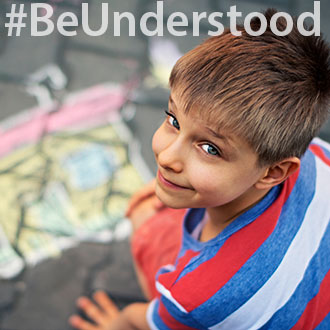To understand what Universal Design for Learning (UDL) is, it helps to understand what it’s not. The word universal may throw you off. It may sound like UDL is about finding one way to teach all kids. But UDL actually takes the opposite approach.
The goal of UDL is to use a variety of teaching methods to remove any barriers to learning and give all students equal opportunities to succeed. It’s about building in flexibility that can be adjusted for every student’s strengths and needs. That’s why UDL benefits all kids.
This approach to teaching doesn’t specifically target kids with learning and attention issues. But it can be especially helpful for the 1 in 5 kids with these issues — including those who have not been formally diagnosed. It can also be very helpful for English language learners.
Understanding UDL
Even if you’re not familiar with the term universal design, you’ve likely encountered many examples of it in your everyday life. Closed captions, automatic doors and accessibility features on smartphones are all examples of universal design. These design elements help people with disabilities. But people who don’t have disabilities may also want to use them.
Get a one-page fact sheet on UDL ›
For example, closed captioning on TVs allows people with hearing impairments to see onscreen text of what is being said. But closed captioning benefits everybody. If you’ve ever tried to watch the news or a game in a noisy restaurant, you probably used the closed captions to follow along.
UDL provides that same kind of flexibility in the classroom. By applying UDL principles, teachers can effectively instruct a diverse group of learners. They do this by building in flexibility in the ways learners can access information and in the ways students can demonstrate their knowledge.
This video from Understood founding partner CAST gives a quick overview of UDL.
Three main principles of UDL
UDL is a framework for how to develop lesson plans and assessments that is based on three main principles:
- Representation: UDL recommends offering information in more than one format. For example, textbooks are primarily visual. But providing text, audio, video and hands-on learning gives all kids a chance to access the material in whichever way is best suited to their learning strengths .
- Action and expression: UDL suggests giving kids more than one way to interact with the material and to show what they’ve learned. For example, students might get to choose between taking a pencil-and-paper test, giving an oral presentation or doing a group project.
- Engagement: UDL encourages teachers to look for multiple ways to motivate students. Letting kids make choices and giving them assignments that feel relevant to their lives are some examples of how teachers can sustain students’ interest. Other common strategies include making skillbuilding feel like a game and creating opportunities for students to get up and move around the classroom.
Other examples of UDL in the classroom include letting students complete an assignment by making a video or a comic strip. To get a deeper understanding of UDL, it also helps to see how it’s different from a traditional approach to education. Explore this chart that compares UDL and traditional education side by side .
Learning and attention issues and UDL
Kids learn in different ways and at different paces.
It’s important to teach to each student’s individual strengths, skills and needs. This is true for all kids — not just kids with learning and attention issues.
7 Things to Know About the 1 in 5 with Learning and Attention Issues
UDL helps all students. But here are some of the ways it may be especially helpful to kids with learning and attention issues:
- Makes learning more accessible in general education classrooms, which is where most kids with learning and attention issues spend most or all of the school day.
- Presents information in ways that adapt to the learner, instead of asking the learner to adapt to the information.
- Gives kids more than one way to interact with material. UDL builds in flexibility that can make it easier for kids to use their strengths to work on their weaknesses.
- Reduces stigma. By giving a variety of options to all students, UDL doesn’t single out the few who receive formal accommodations as part of IEPs or 504 plans.
UDL is regarded so highly that it’s mentioned by name in the nation’s main education law. The Every Student Succeeds Act (ESSA) encourages states and districts to use federal funding to help teachers expand the use of UDL.
If you’re not sure whether your school uses UDL, ask. If they don’t know about UDL, talk to them about it. As a parent, you can advocate for teacher training that will help make the curriculum more accessible for your child.
Want a more detailed look at UDL? Dive into this 2017 case study on how one school started using UDL.
Key takeaways
- With UDL, information is often presented in more than one way, including text, audio and hands-on formats.
- UDL encourages teachers to offer different test formats, including oral presentations and group projects, to get a more accurate picture of what students know.
- UDL also looks for different ways to keep students motivated.
This article originally appeared on Understood.org , a free online resource for parents of children with learning and attention issues. Reprinted courtesy of Understood.org © 2018 Understood, LLC. All rights reserved.


